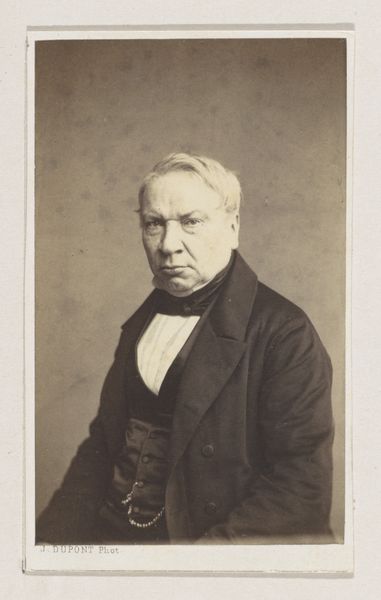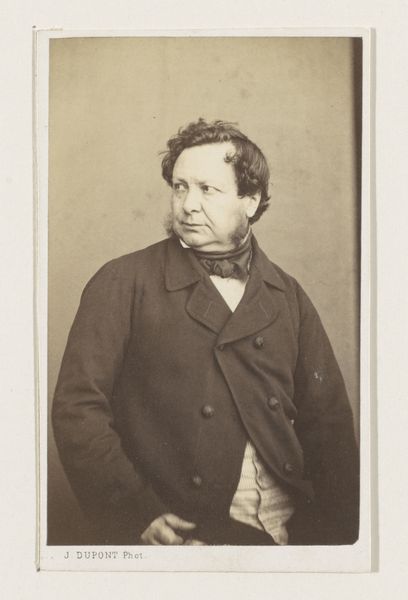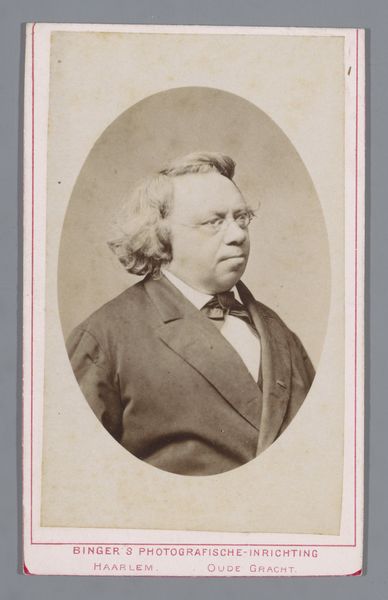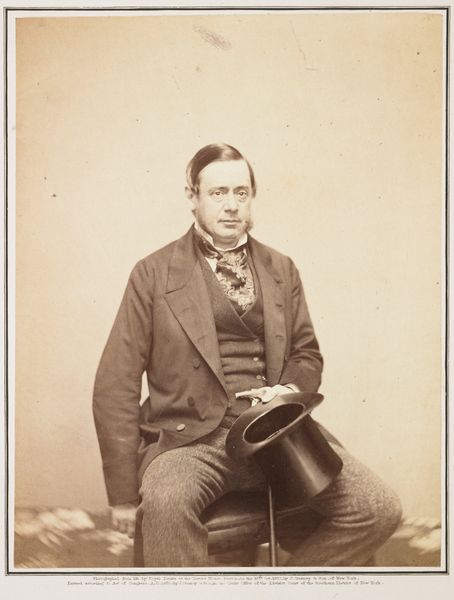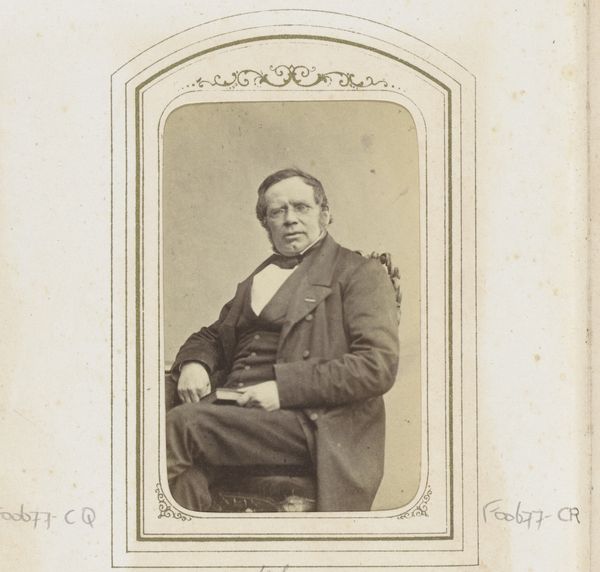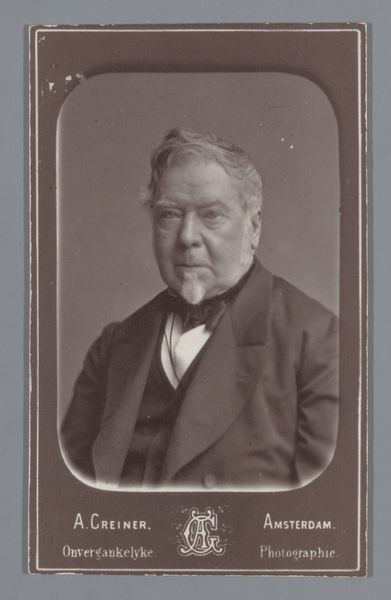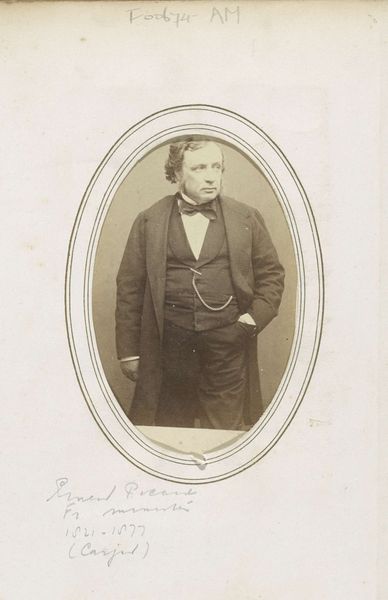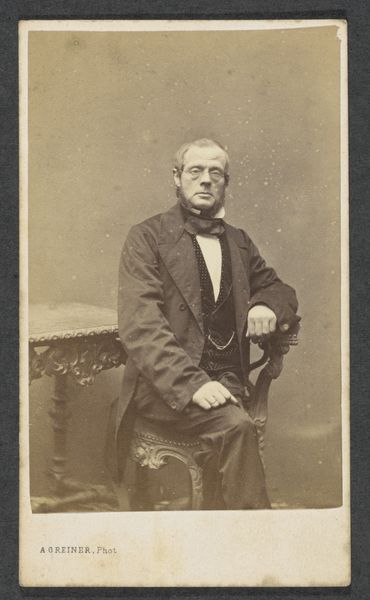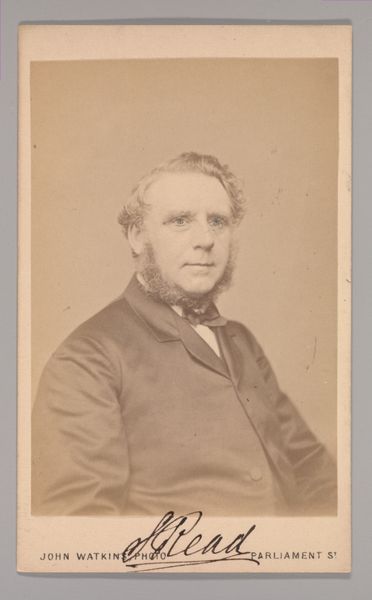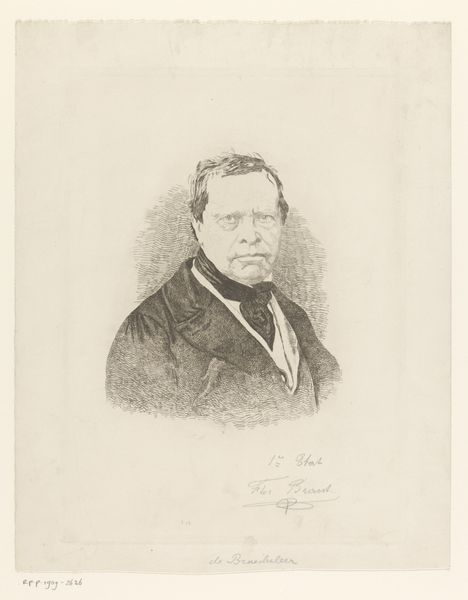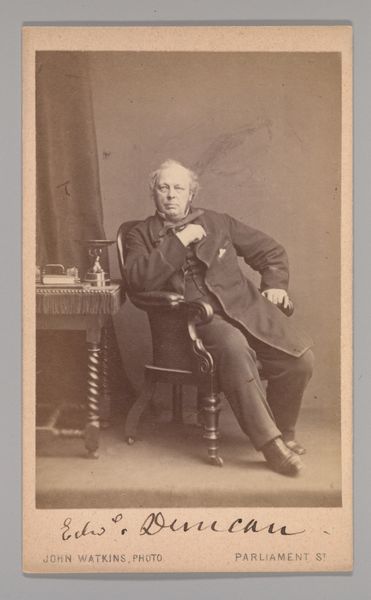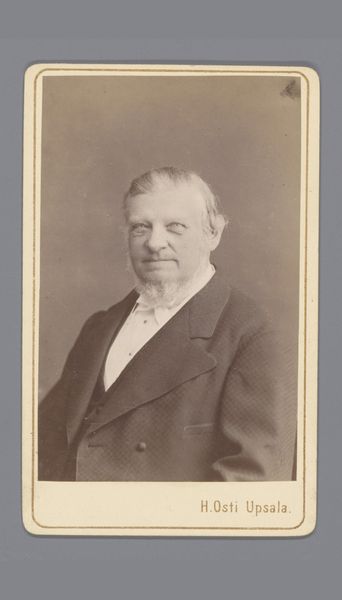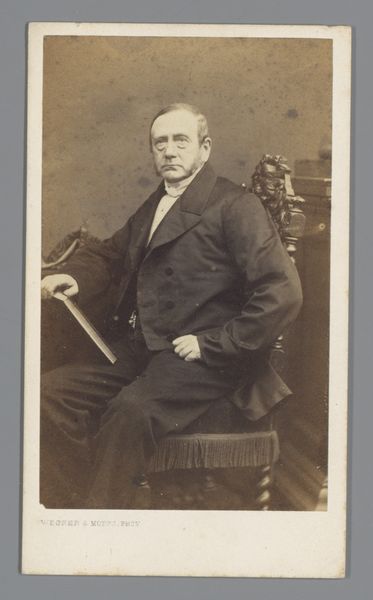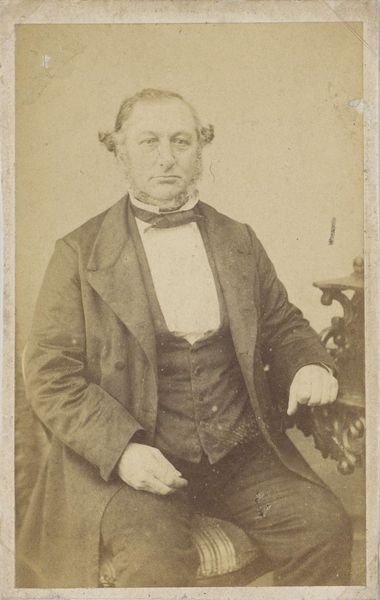
Dimensions: height 100 mm, width 62 mm
Copyright: Rijks Museum: Open Domain
Editor: This gelatin-silver print, a photographic portrait from 1861 by Joseph Dupont, depicts the painter Ferdinand de Braekeleer. The tight framing creates a somewhat somber mood, almost severe. What stands out to you in this portrait? Curator: This image resonates deeply because of how it presents the sitter’s internal world through external symbols. Consider the dark clothing against the lighter background – a visual representation perhaps of de Braekeleer’s own struggle with the changing art world, clinging to older, established forms in a time of great artistic upheaval. Notice his slightly disheveled hair, almost romantic. How might this disrupt the initial somber impression you mentioned? Editor: It does soften the severity a bit, making him appear more human and vulnerable. Almost… approachable. Curator: Precisely. Dupont’s choice to capture that vulnerability speaks volumes. Photography in this era was just beginning to find its voice, often mimicking painting. However, this image moves beyond mere imitation. What could that slight frown, those deep-set eyes convey about the artist’s psyche and role in the changing social order? Editor: Perhaps a deep contemplation of his artistic legacy, a weighing of tradition against innovation? It feels very personal. Curator: And how do you think that the public could percieve this? The rise of photography made images more accessible, so consider how an image like this might challenge or reinforce ideas of what it means to be an artist. Editor: That's fascinating. I hadn't considered the social impact of photography itself shaping the artwork's reception. Thanks for helping me consider this artwork within that context. Curator: My pleasure. The layers of symbolism captured within a single image from that era – it continues to resonate.
Comments
No comments
Be the first to comment and join the conversation on the ultimate creative platform.
